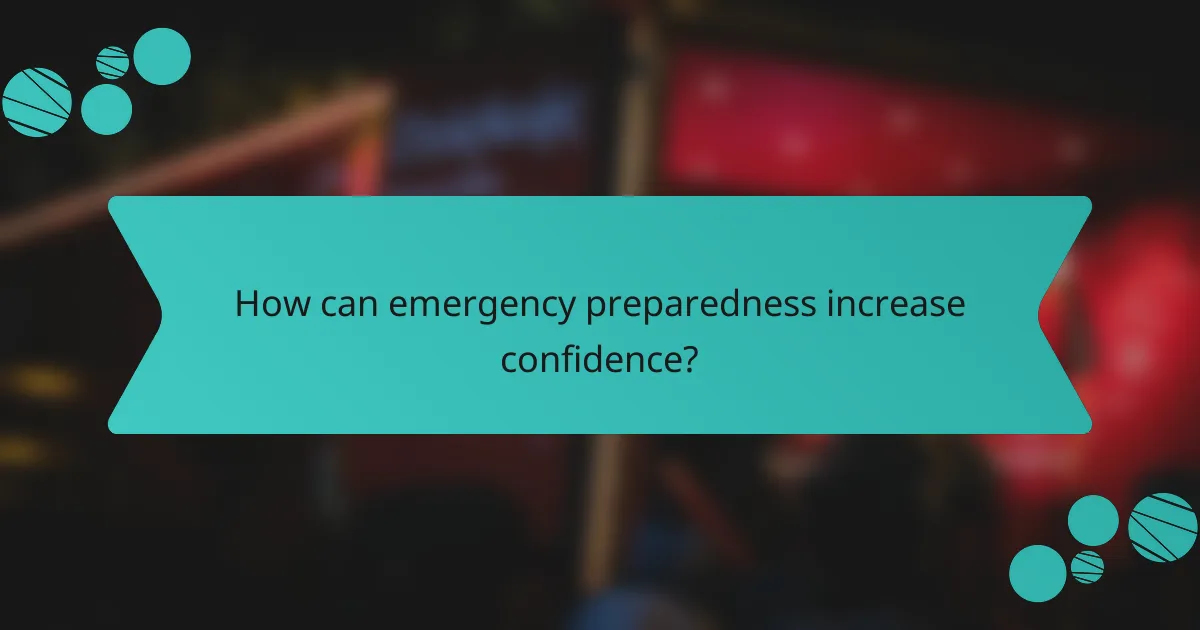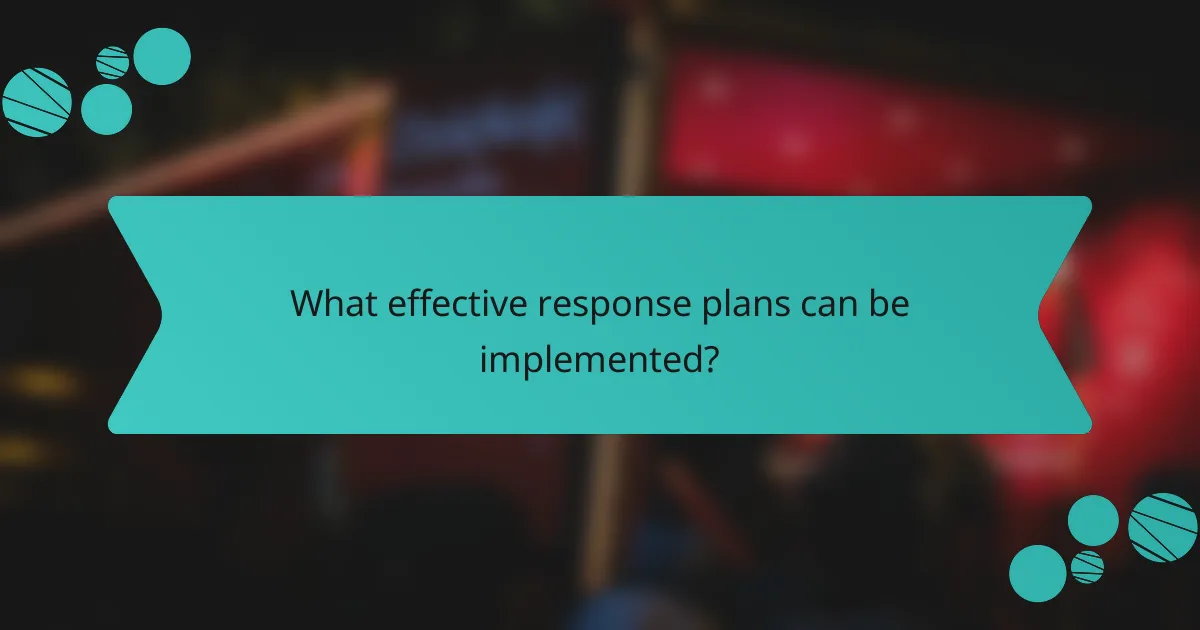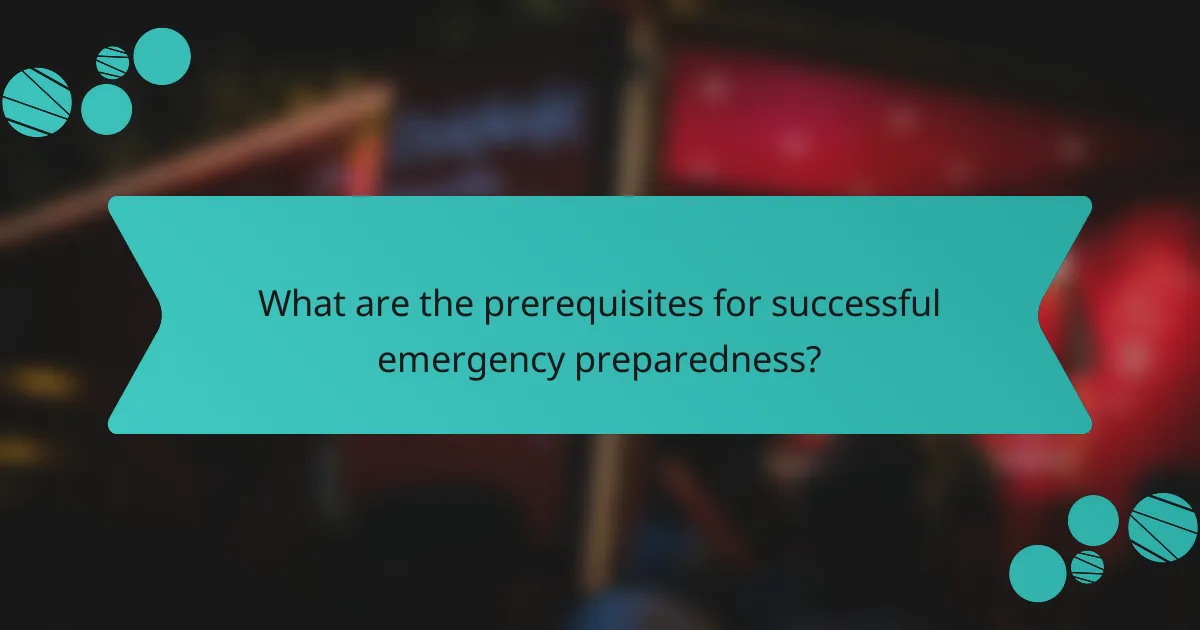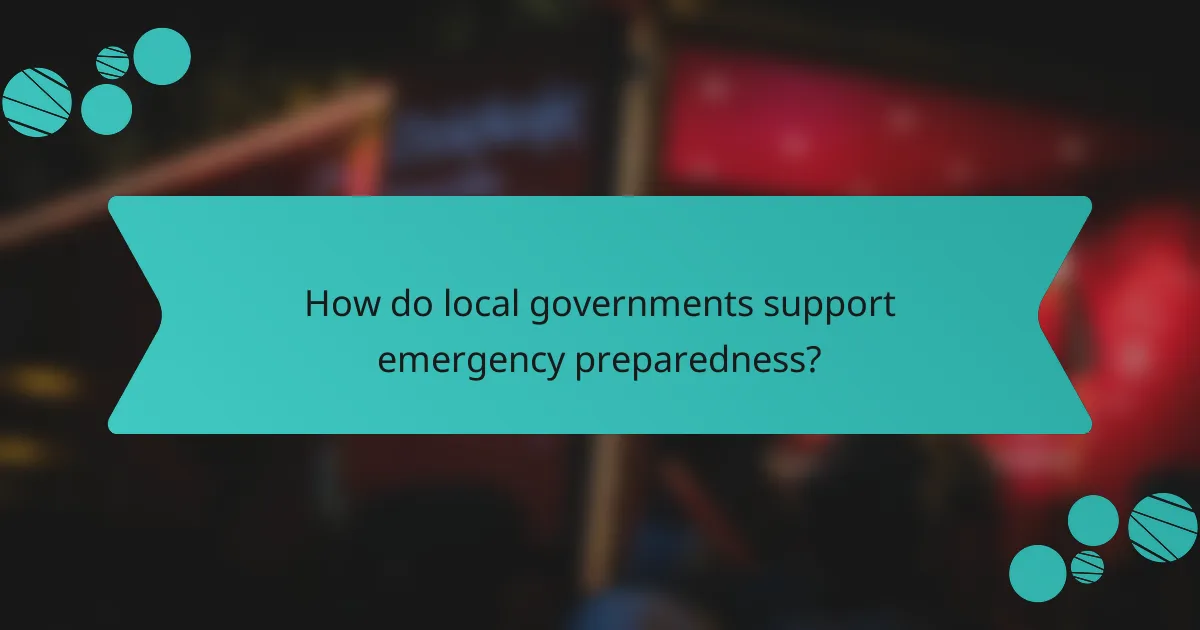Emergency preparedness is essential for fostering confidence and ensuring effective responses during crises. By equipping individuals and communities with the necessary knowledge and structured response plans, preparedness not only enhances the ability to manage emergencies but also promotes peace of mind. When people feel ready, they can approach unexpected situations with calmness and clarity, leading to better outcomes for all involved.

How can emergency preparedness increase confidence?
Emergency preparedness can significantly enhance confidence by equipping individuals and communities with the knowledge and skills needed to respond effectively in crises. When people feel prepared, they are more likely to remain calm and take appropriate actions during emergencies, leading to better outcomes.
Training programs for individuals
Training programs tailored for individuals help build essential skills and knowledge for emergency situations. These programs often cover first aid, fire safety, and basic survival techniques, which can empower participants to act decisively when needed.
Consider enrolling in local courses offered by organizations like the Red Cross or community colleges. Many programs are available at little to no cost, making them accessible to a wide audience.
Community engagement initiatives
Community engagement initiatives foster collaboration and communication among residents, enhancing overall preparedness. These initiatives can include workshops, informational sessions, and neighborhood planning meetings that encourage residents to share resources and strategies.
Participating in local emergency response teams or neighborhood watch programs can strengthen community ties and improve collective readiness. Engaging with local government or emergency services can also provide valuable insights into specific risks and resources available in your area.
Regular drills and simulations
Conducting regular drills and simulations is crucial for reinforcing emergency preparedness. These exercises allow individuals and communities to practice their response plans, identify weaknesses, and improve coordination among participants.
Schedule drills at least once or twice a year, focusing on various scenarios such as natural disasters or medical emergencies. This practice not only builds confidence but also ensures that everyone knows their roles and responsibilities during an actual event.

What effective response plans can be implemented?
Effective response plans are structured approaches that organizations can adopt to prepare for and manage emergencies. These plans help ensure that resources are utilized efficiently, communication is clear, and risks are minimized during crises.
Risk assessment frameworks
Risk assessment frameworks are systematic processes used to identify, analyze, and prioritize risks associated with emergencies. Organizations should evaluate potential hazards, their likelihood, and potential impacts to develop a comprehensive understanding of vulnerabilities.
Common frameworks include the ISO 31000 standard and FEMA’s risk management guidelines. These frameworks help organizations create tailored response plans that address specific threats relevant to their location and operations.
Emergency communication strategies
Emergency communication strategies outline how information will be disseminated during a crisis. Clear communication is vital for coordinating responses and keeping stakeholders informed, which can significantly reduce panic and confusion.
Effective strategies often include multiple channels such as text alerts, social media updates, and dedicated hotlines. Regular drills and training can ensure that all team members are familiar with these communication methods and can execute them under pressure.
Resource allocation plans
Resource allocation plans detail how to distribute personnel, equipment, and finances during an emergency. Proper allocation ensures that critical resources are available where and when they are needed most, enhancing the overall effectiveness of the response.
Organizations should create a list of essential resources and establish priorities based on potential scenarios. Regular reviews and updates to these plans are crucial, especially as new resources become available or as risks evolve over time.

How does emergency preparedness provide peace of mind?
Emergency preparedness enhances peace of mind by equipping individuals and families with the knowledge and plans necessary to respond effectively to crises. This proactive approach reduces uncertainty and fosters confidence in handling unexpected situations.
Reduction of anxiety through knowledge
Understanding potential emergencies and having a clear plan can significantly reduce anxiety. When individuals know what to expect and how to react, they feel more in control, which diminishes fear and panic during actual events.
Consider creating a simple emergency plan that outlines steps for various scenarios, such as natural disasters or medical emergencies. Regularly reviewing and practicing this plan can reinforce knowledge and build confidence.
Support networks for families
Establishing a support network is crucial for effective emergency preparedness. Families should identify neighbors, friends, or local organizations that can provide assistance during crises, ensuring that help is readily available when needed.
Engaging with community resources, such as local emergency services or preparedness workshops, can strengthen these networks. Sharing plans and resources with others fosters a sense of solidarity and enhances overall readiness.

What are the prerequisites for successful emergency preparedness?
Successful emergency preparedness requires a combination of community involvement and access to training resources. These elements help build confidence, create effective response plans, and provide peace of mind during crises.
Community involvement
Community involvement is crucial for effective emergency preparedness. Engaging local residents in planning and response efforts fosters a sense of ownership and responsibility, which can enhance overall readiness.
To promote community involvement, consider organizing regular meetings or workshops where residents can share their concerns and ideas. Collaborating with local organizations, such as schools and nonprofits, can also help reach a wider audience and encourage participation.
Access to training resources
Access to training resources is essential for equipping individuals and groups with the skills needed for emergency situations. Training can cover various topics, including first aid, disaster response, and communication strategies.
Local governments and organizations often provide training sessions or workshops, sometimes at little to no cost. Online resources, such as webinars and instructional videos, can also supplement in-person training. Regularly updating skills through refresher courses can ensure preparedness remains high.

How do local governments support emergency preparedness?
Local governments play a crucial role in emergency preparedness by providing resources, training, and coordination to ensure communities are ready for disasters. Their support enhances community resilience through effective response plans and increased public confidence.
Funding for training programs
Local governments allocate funds for training programs that equip emergency responders and community members with essential skills. These programs often cover first aid, disaster response, and crisis management, ensuring that individuals are prepared to act effectively during emergencies.
For example, municipalities may offer free workshops or subsidized courses that teach CPR, basic firefighting techniques, or emergency communication strategies. Investing in these training initiatives can significantly improve response times and overall community safety.
Partnerships with local organizations
Local governments frequently establish partnerships with non-profits, schools, and businesses to enhance emergency preparedness efforts. Collaborating with these organizations allows for a more comprehensive approach to training and resource distribution.
These partnerships can lead to joint drills, shared resources, and community outreach programs that educate the public about emergency procedures. By leveraging local expertise and networks, governments can create a more resilient community capable of responding to various emergencies.

What are the emerging trends in emergency preparedness?
Emerging trends in emergency preparedness focus on enhancing response capabilities through technology, community engagement, and comprehensive planning. These trends aim to increase confidence among responders and the public, ensuring effective response plans and peace of mind during crises.
Technology integration in response plans
Technology integration in emergency response plans involves using advanced tools and systems to improve communication, coordination, and efficiency. This can include mobile applications for real-time alerts, drones for aerial assessments, and data analytics for risk assessment.
For example, many municipalities are adopting Geographic Information Systems (GIS) to map hazards and resources, allowing for better strategic planning. Additionally, social media platforms serve as vital channels for disseminating information quickly to the public during emergencies.
When implementing technology, ensure that all stakeholders are trained to use these tools effectively. Regular drills that incorporate technology can help identify potential gaps and improve overall readiness. Avoid relying solely on technology; maintain traditional communication methods to reach all community members, especially those less tech-savvy.
